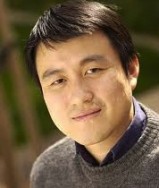
Global cooling
This web site tends not to write about new technologies until they are commercially available, but a new breakthrough from Stanford prof Shanhui Fan, reported in the Journal of Engineering seems worthy of a heads-up. It taps the frigid expanses of outer space to cool the planet.
Once its perfected, homes and buildings will be chilled without air conditioners, car interiors won’t heat up in the summer sun.
The team of researchers at Stanford designed an entirely new form of cooling structure that cools even when the sun is shining. Such a structure could vastly improve the daylight cooling of buildings, cars and other structures by reflecting sunlight back into the chilly vacuum of space.
“People usually see space as a source of heat from the sun, but away from the sun outer space is really a cold, cold place,” explained Shanhui Fan, professor of electrical engineering and the paper’s senior author. “We’ve developed a new type of structure that reflects the vast majority of sunlight, while at the same time it sends heat into that coldness, which cools manmade structures even in the day time.”
The trick, from an engineering standpoint, is two-fold. …

